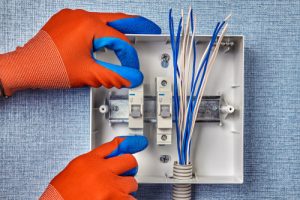 Electrical systems are an essential part of any building, residential or commercial. They provide power to your appliances, lighting, and overall function of the building. However, you may not be aware of the benefits of a low voltage system. This blog post will demystify low voltage electrical systems and give you an understanding of the basics and benefits for your home or business.
Electrical systems are an essential part of any building, residential or commercial. They provide power to your appliances, lighting, and overall function of the building. However, you may not be aware of the benefits of a low voltage system. This blog post will demystify low voltage electrical systems and give you an understanding of the basics and benefits for your home or business.
What is a low voltage electrical system?
A low voltage electrical system is an electrical system that uses a lower amount of electricity to power your appliances and lighting fixtures. Typically, the voltage range is between 50 to 1000 volts. This means that the current in the circuit is lower than the standard 120-volt circuit you may have in your home or office.
What are the components of a low voltage electrical system?
A low voltage electrical system is composed of several components, which include:
1. Transformer: A transformer is an electrical device that is used to step down the voltage from the incoming high voltage line to a lower voltage level that is suitable for your appliances and lighting fixtures.
2. Low voltage distribution panel: A low voltage distribution panel is an electrical panel that is used to distribute the low voltage power to the individual circuits that power the appliances and lighting fixtures in your building.
3. Wiring: The wiring used in a low voltage electrical system is typically smaller than the standard 120-volt wiring used in a regular electrical system. This is because the current in the circuit is lower, which allows the use of smaller wires. The smaller wires make installation more flexible and less expensive.
4. Control devices: Control devices are used to control the flow of electricity through the low voltage circuit. Examples of control devices include switches, dimmers, and motion sensors.
What are the benefits of a low voltage electrical system?
1. Energy efficiency: Low voltage electrical systems are generally more energy-efficient than standard electrical systems. This is because the lower voltage results in lower energy usage, which translates to lower energy bills.
2. Safer: Low voltage electrical systems are also safer than standard electrical systems. This is because the lower voltage means a lower chance of electrical shock or electrocution.
3. Flexibility: The smaller wiring and control devices used in a low voltage system make installation more flexible and less expensive. This means that the system can be easily adapted or expanded as your needs change.
4. Less maintenance: Low voltage electrical systems require less maintenance than standard electrical systems. This is because the lower voltage means less wear and tear on the components, which results in a longer lifespan and less maintenance costs.
5. Improved lighting: Low voltage electrical systems are ideal for lighting fixtures. The lower voltage allows for greater control over the lighting intensity, which means that you can create a more customized lighting experience.
6. Environmentally friendly: Low voltage electrical systems are more environmentally friendly than regular electrical systems. This is because they consume less energy, which means that less electricity needs to be generated, resulting in lower greenhouse gas emissions.
Final Thoughts
Low voltage electrical systems offer many benefits over standard electrical systems. They are more energy-efficient, safer, flexible, require less maintenance, improve lighting, and are more environmentally friendly. If you are looking to upgrade or install an electrical system in your home or business, consider a low voltage electrical system. Contact a licensed electrical contractor to discuss your options and find the system that works best for your needs.

